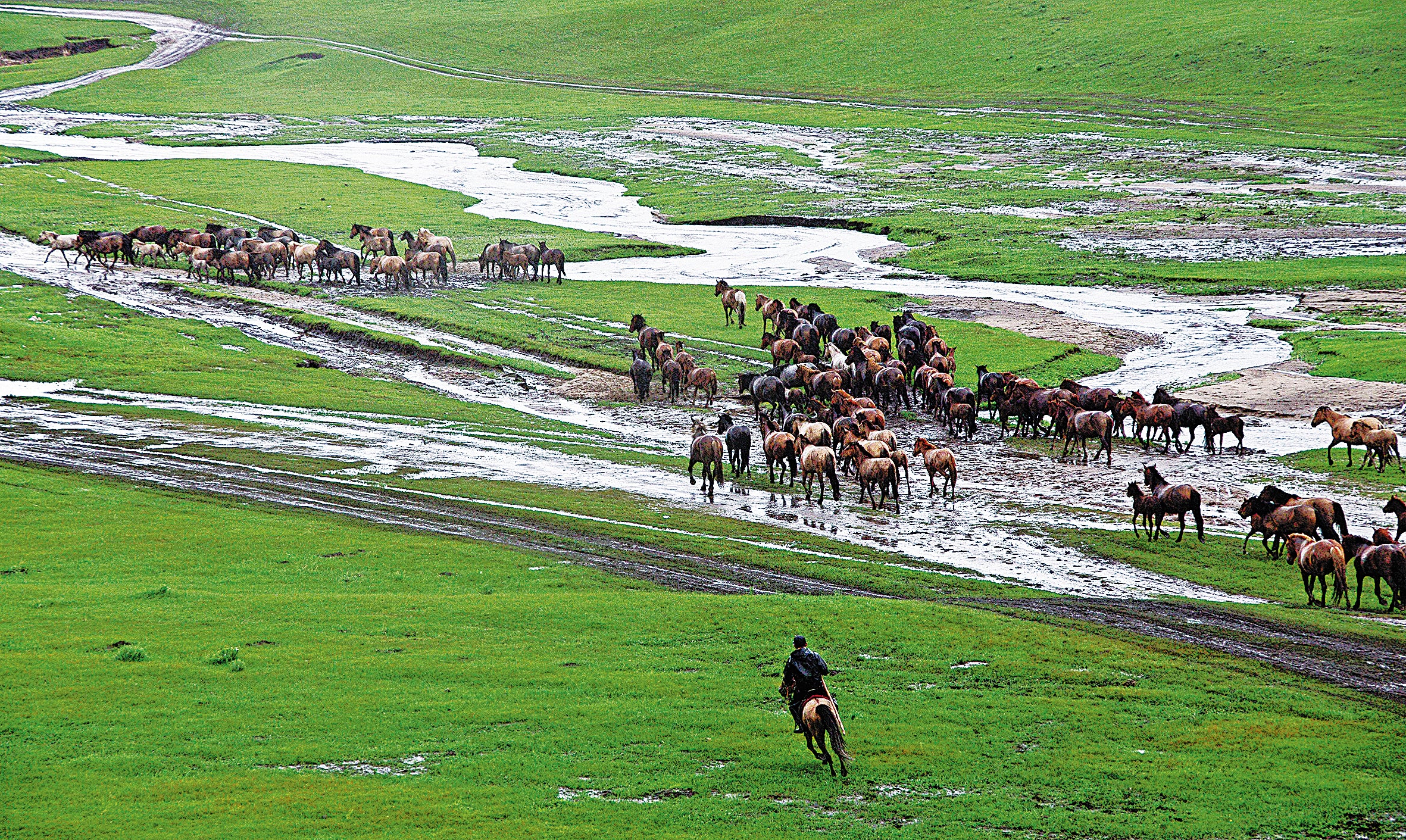Grassland heritage sees new horizons
THE ARTICLES ON THESE PAGES ARE PRODUCED BY CHINA DAILY, WHICH TAKES SOLE RESPONSIBILITY FOR THE CONTENTS

The sun hasn’t yet risen, but herdsman Oyunbileg, 39, has got up to prepare for this big day. For locals in Bayan-Undur sum, a township-level administrative division of North China’s Inner Mongolia autonomous region, who have experienced pastoral life and witnessed the circle of nature one generation after another, the mid-June season is among the busiest of the year.
The room is infused with an aroma of dairy, thanks to the heavy Mongolian breakfast prepared by Oyunbileg’s wife – milky tea, quark cheese and dried beef – a must before setting off on the journey with his “family”. This includes about 70 sheep and goats as well as 30 head of cattle.
The grass is flourishing and lush. Bayan-Undur sum sits in the heart of boundless prairies spreading across Ar Horqin Banner (a county-level administrative region) in Inner Mongolia. To better nurture their livestock, more than 3,000 households of the sum, or about 15,000 people, will move to their summer camps. Just like their ancestors, they will stay there for about three months before returning to the winter settlements.
These three months also enable the grass at the winter camp to regain its lushness, providing the herdsmen with feed for the approaching snowy season.
In 1546, the 15th-generation grandson of Genghis Khan’s younger brother led his tribe to relocate here, but the nomadic tradition on this land stretches back many more centuries, even further back than the rise of Genghis Khan. Archaeologists have found evidence that people carried out basic production here as far back as the Neolithic Age.
Since Oyunbileg’s childhood, summertime journeys have been etched into his memory.
“I first moved around in summer with my parents when I was seven or eight,” Oyunbileg recalls. “It was a really tough journey riding the lele cart [a type of oxcart] for days. It was exhausting, but so much fun.”
Throughout history, until around a decade ago, lele carts carried the hopes of locals for robust livestock, which were fed on the flourishing grass. In the past decade, there has been an increase in the use of modern vehicles. A journey now is often shortened from days to hours.
Tools may change, but some key traditions linger.
On May 20, 2022, Ar Horqin Grassland Nomadic System in Inner Mongolia was inscribed on the list of Globally Important Agricultural Heritage Systems, or GIAHS, by the Food and Agriculture Organisation (FAO) of the United Nations.
The FAO says on its website that by evolving in the middle of lofty mountains, vast grasslands and densely covered rivers, the traditional nomadic production and lifestyle of the Mongolian ethnic group has been well preserved.
Nonetheless, for hardworking herdsmen like Oyunbileg, life is more than idyllic descriptions.
“We are busy all day long,” Oyunbileg says. “Milking, cleaning cow dung, feeding... you name it. But as long as the weather is fine, I don’t have much to worry about. Our calves will grow fast this spring, and they will surely sell for a good price.”
Oyunbileg’s family can earn about 70,000 yuan (£8,492) a year selling livestock.
The Ar Horqin Grassland Nomadic System has a healthy ecosystem and a good landscape, according to Liu Moucheng, an associate researcher with the Institute of Geographic Sciences and Natural Resources Research, Chinese Academy of Sciences, who is a co-drafter of bidding documents seeking GIAHS status.
The seasonal movement of herds among different pastures plays an important role in maintaining the self-renewal and recovery capacity of the grasslands, and the nomadic lifestyle can protect vegetation and make rational use of water resources, while keeping soil fertility from degrading, Liu adds.
Chuluunbagana, the head of Bayan-Undur sum, says: “Within the summer pastures, we rotate different grazing spots. We start from somewhere higher up on the hill, or further away from our camps. Grass there is flourishing at first. Then, we gradually approach towards our camps.
“We can thus leave enough time for the grass to take a rest and grow,” he says.
Previously published on Chinadaily.com.cn
Subscribe to Independent Premium to bookmark this article
Want to bookmark your favourite articles and stories to read or reference later? Start your Independent Premium subscription today.